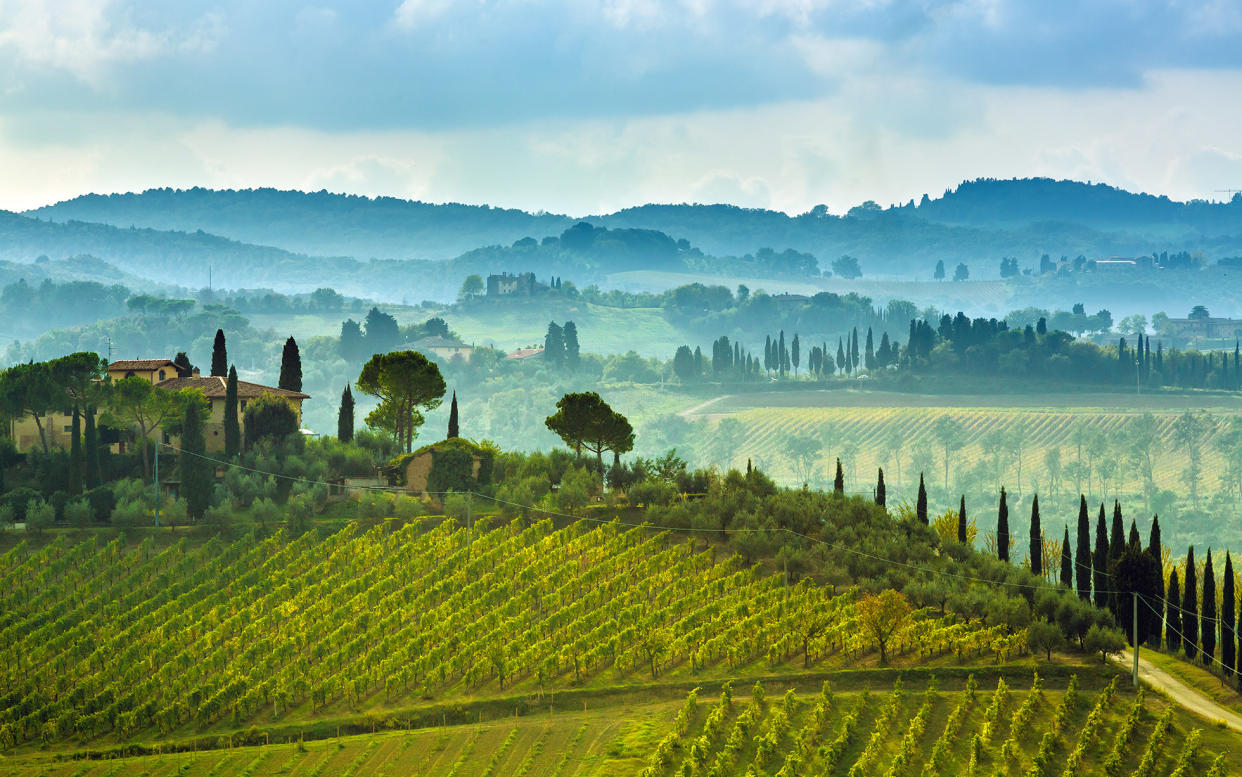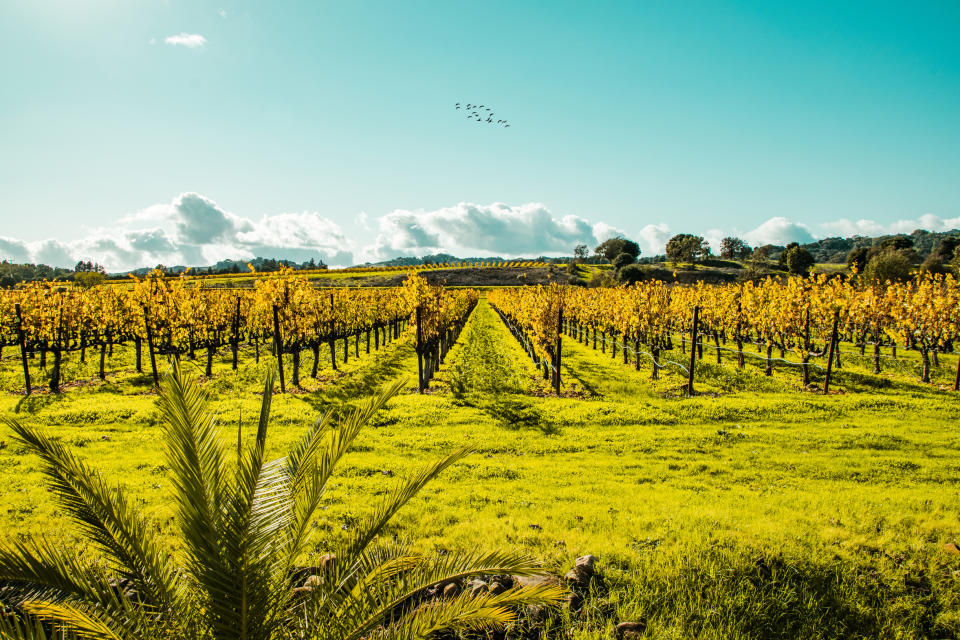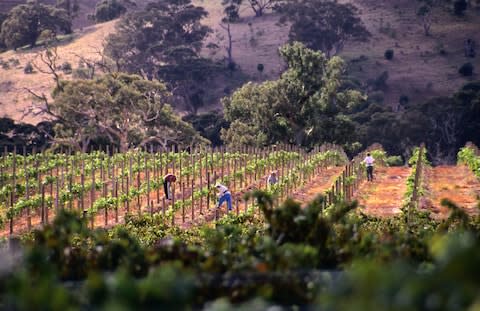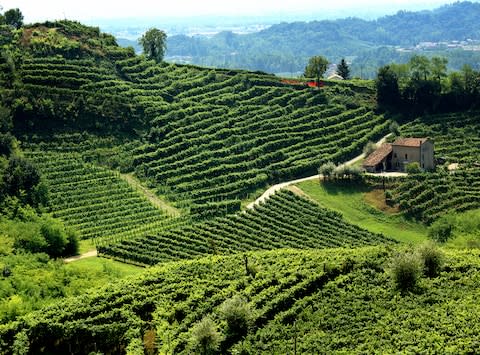Why wine tourism is booming in 2018 – and the best destinations to visit

Dry January has crawled to an end, and thank heavens for that. I never tolerated food and drink fads in my kids, so don’t want to hear about them from adults. It is time instead to talk of wine and, more specifically, wine tourism. I’ve been practising it for decades – walking through vineyards, sipping, slurping, talking with winemakers about landscapes, family, grape varieties and, after the fourth glass, the possibility of time travel.
Now the rest of the world is catching up. Two of Britain’s more interesting wine holiday companies – Grape Escapes and Smooth Red – are estimating 30 per cent growth for 2018. Meanwhile, the longest-established such outfit, Arblaster & Clarke, is already filling up its trips to South Africa for 2019. Naturally, wine tourism remains a niche for the cultivated. “The demographic is top-end,” says Sam McCathie at Arblaster & Clarke. But I’m assuming that includes everyone presently reading this, so I won’t slow down.

There are good reasons for the surge. We’re all drinking a lot more wine, and from a pleasing array of countries. It is no longer the preserve of old buffers the colour of claret. “The tourism business structure has changed,” says Jenna Jones of Grape Escapes. “It used to be mainly male, mainly people who already knew about wine. These days, we’re taking couples, younger people and small groups of friends. On a recent tour to Bordeaux, we had a 19-year-old couple alongside a fellow of 75.”
10 places in France every wine lover should visit
As everyone points out, travel itself is now cheaper and easier. And wine is almost always produced in beautiful places to which you’d want to go anyway. Contemplate the Stellenbosch and Napa valleys, Spanish Rioja and McLaren Vale in Australia, the Alsace, Prosecco and Palatine wine routes or the highly desirable Tuscany and Provence. Here be damn-near-ideal arrangements of mountains and hills, with vines rising up slopes and rolling towards villages and towns designed for mellow well-being.
And the thing is, precisely, that these are wine countries; have been, in the main, for centuries. Wine tourism furnishes a satisfactory supply of vintages – but so does Asda. The overwhelming advantage is that, like no other agricultural product, wine also acts as a passport to the heart of these lands, their culture and past, their food, festivals, jollity and people. Especially the people. Of course, some are pompous. A few are mad. After a tense dinner, I was once ejected from a French estate by an ex-army officer with a shotgun in the back of his Jeep. But, in my experience, most are first-class, warm and welcoming. They give the wine a human story. You’ll think of them and maybe smile when you pull out the corkscrew back home.
At a glance | The bluffer's guide to French wine
Naturally, vignerons get carried away. Wine is their life. They will conceive of it as the cornerstone of civilisation, catering to both material and spiritual needs. They will use words like “ethereal”, “sublime” and even “transcendental”. This is OK. It does no harm and, although bonkers, is mainly sincere. It’s cut off from real life, but I get enough real life in my real life. I don’t need it on a wine trip, so I suspend disbelief and have a ball.
You might do the same, especially as wine tourism is not only growing but constantly broadening its base. “Wine tourism in Europe has been narrowly focused,” says Dubliner Karl O’Hanlon, whose Languedoc chateau hotels, Les Carrasses and St Pierre-de-Serjac, major on wine-influenced hols. “You’d visit a vineyard, do a tasting, leave with a couple of bottles and that was that. We’ve expanded the idea. Essentially, anything which people do with the vineyards as a background counts. We’ve an unbelievably bucolic setting, in which people find their own level of wine activity. You can concentrate on tasting and talk, or cycling and walking. Wine is an entrée to all sorts of enjoyment.”

They’ve known this in Napa for ages. As you’d expect, California is gifted at rendering the sophisticated attractive, fun and profitable. It’s also gifted at recovery. It needs to be. Since 2000, the northern wine zone has been smacked by floods, an earthquake and, last October, devastating fires. Thankfully, though, not too many wineries were affected – pretty much everything in Napa is open and working. We may travel the valley by the vintage Pullman wine train to St Helena, dining fine and stopping at wineries. We may also cycle, kayak the river or fly by balloon.
At a glance | How to ship wine back home
Or we may drive, pulling off to the V. Sattui winery near St Helena, regularly named California’s winery of the year. Or to Stag’s Leap winery, where the extraordinary new visitor centre features art and a Foucault’s pendulum, the underground cellars stretch forever and there are memories of the 1976 “Judgment of Paris”. That’s when a Stag’s Leap cabernet sauvignon beat the finest of France in a blind tasting by French luminaries. It was as if Oklahoma City FC had trounced Paris St Germain.

Nor are the Australians slouches at wine tourism – notably not in the coastal McLaren Vale, south of Adelaide. I have before me publicity for summer sundowners (food, wine, live music) on Friday evenings into February at the Shingleback winery, a porchetta party at Oliver’s Taranga vineyards on Feb 25 and the Grapes of Mirth afternoon of comedy, wine and food at Paxton winery on March 4. And then there’s the d’Arenberg winery, its astonishing glass focal point rising in the vines like a pharaonic Rubik’s cube half-completed. The views to Gulf St Vincent and the Willunga hills are outstanding, the range of in-cube possibilities exhausting – from art appreciation to a “wine inhalation room”, any number of tasting possibilities (including of the unbeatably named Solipsistic Snollygoster), dining at d’Arry’s and the chance to blend one’s own wine. You might fly over the vineyard too, by helicopter or biplane. All you need is time, taste and money.
South Africans, too, realised early that successful wine tourism was as much about a good time as a great wine. Granted, the mountain ‘n’ valley drama of the Stellenbosch and Franschhoek regions east of Cape Town gives them an unfair start. But at, say, the Tokara winery, it capitalises well – with a futuristic cellar full of art and sculpture alongside the syrah, olive oil and views to Simonsberg mountain. Tastings are free – a rarity in the New World – and the restaurant is apparently a revelation. Once you’ve finished, there remain around 130 Stellenbosch wineries to try.
Over the hills, the Franschhoek wine tram allows you to hop off at some of the region’s 50 wineries. You’ll find tastings, gardens, music and as many opportunities to hike, bike, ride, fish for trout, watch for birds or just hang around and relish, as anyone might need.
Top 10 | The countries that produce the most wine
Meanwhile, Europe is in hot pursuit. Spanish Rioja cedes little to the New World in natural splendour – sharp hills covered in vines, preparatory work for the Cantabrian peaks behind; hill-topping villages like the squeeze of medieval life which is Laguardia – but the modernising fairy has flitted through here, too. Frank Gehry’s hotel at the Marques de Riscal winery in Elciego is much commented on, and from the outside, I’d say, much overrated. It looks like the aftermath of a hurricane in a Miami junkyard. But it needs seeing – an undeniably contemporary adjunct to a fine old vineyard.
Top 10 | The countries that consume the most wine per capita
Up the road at Briones, the Vivanco Museum of Wine Culture is as good as wine museums get (unless they’re the Cité du Vin in Bordeaux). Winery tours, tastings and tapas mean you may be there a while. At Ollauri, the Bodegas Conde de los Andes boasts extraordinary, 500-year-old underground cellars now open to one and all, while the Bodegas Valdemar at Oyon has realised that families sometimes arrive with children. Thus it’s devised a circuit seeking the Count of Valdemar’s magic grapes, prior to grape juice in a playroom.
In Italy, the treasures of Tuscany are maybe familiar. Stand-outs include Antinori in Chianti, where the 26th generation oversees an ambitious 2012 winery which, though three storeys high, slots subtly into the landscape. Oddly for ancient Tuscany, it’s as bracingly avant-garde as a contemporary gallery, boasting art, artefacts, Chianti Classico vintages and a monumental spiral staircase.
Less celebrated is the Prosecco wine route, in Veneto. From Conegliano to the absurdly charming village of Valdobbiadene, the road winds 30 miles through the stirring slopes of Dolomite foothills. You might find the Garbara winery on the Cartizze hill, home of the finest DOCG prosecco and the most expensive vineyards in Italy, or the Sorelle Bronca, where sisters Antonella and Ersiliana make top-end prosecco to startle those used to the industrial stuff.

These days, then, wine tourism is a gamut. British wine tour firms have grasped this. Says Adam Stebbings of Smooth Red: “We have wine buffs who know a lot and want to know more, others familiar with Californian wine and keen to discover Europe – and those who simply want a weekend of good food and drink.” Also, there are those who want wine, then tourism; that’s why the company offers four-wheel-drive trips in the Camargue and balloon flights over the Loire. Grape Escapes lays on cooking lessons in Saint-émilion, wine blending in Bordeaux, and golf in Provence. “We are passionate about wine,” says Jenna Jones, “but people are seeking experiences as well.”
Vineyards on your doorstep | If you visit just one UK producer...
Arblaster & Clarke takes this as far as any. It caters still for claret geeks fascinated by soil types, but embraces also wine and opera (“natural bed-fellows,” says Sam McCathie), private yacht wine cruises and, this year, a tour following Churchill from Chartwell to Champagne. These are splendid prospects. Farewell, then, upstart Dry January – you bored us well. Onward into 2018, which, like the 7,000 before it, will be the year of the vineyard.
Arblaster and Clarke (arblasterandclarke.com). Grape Escapes (grapeescapes.net). Smooth Red (smoothred.com)